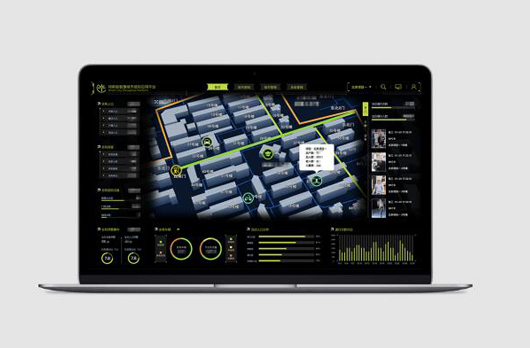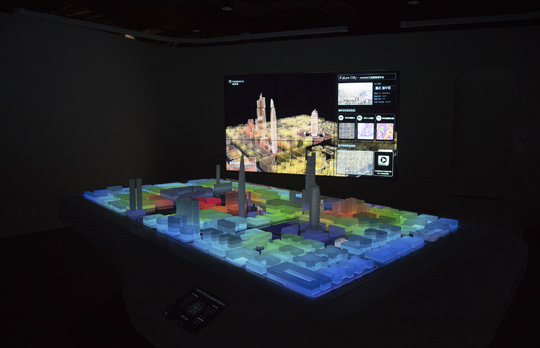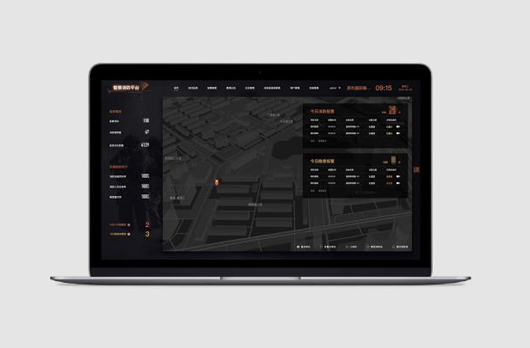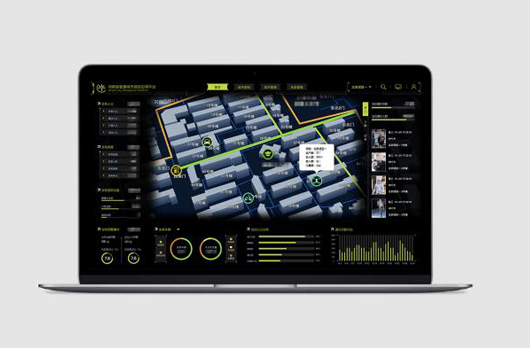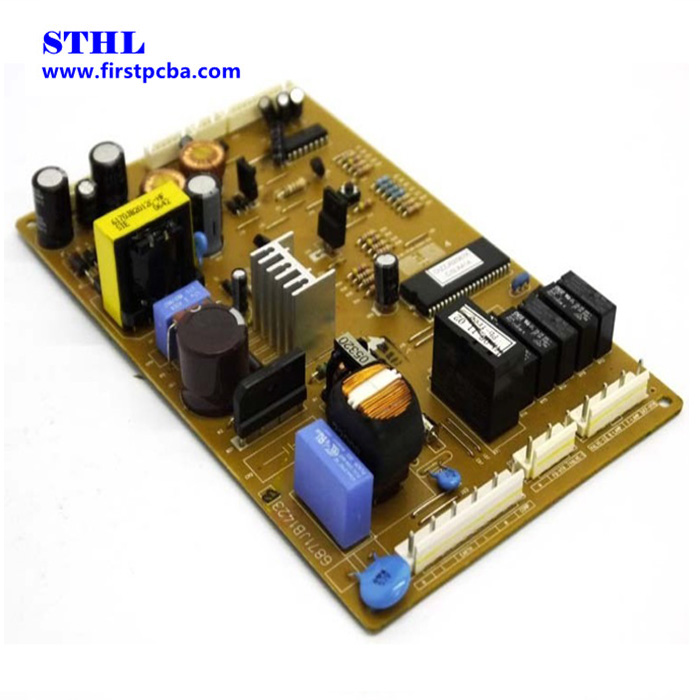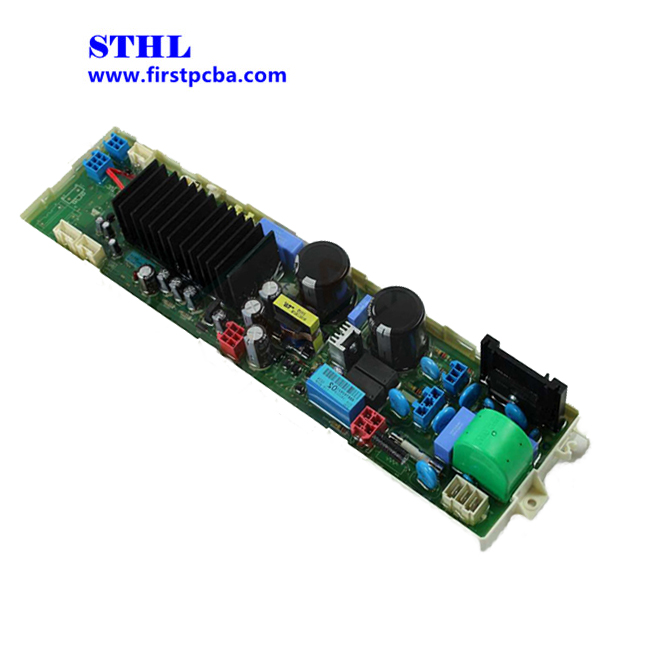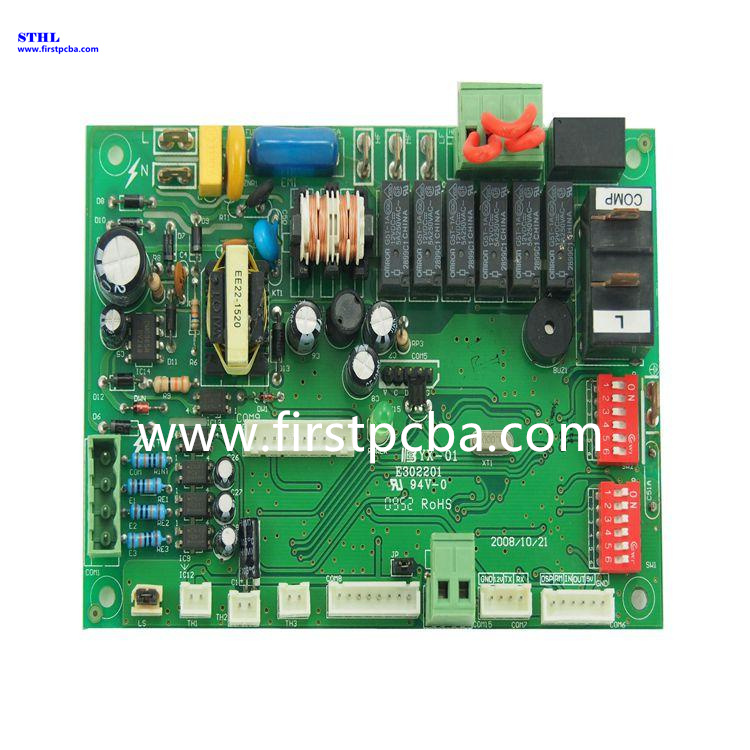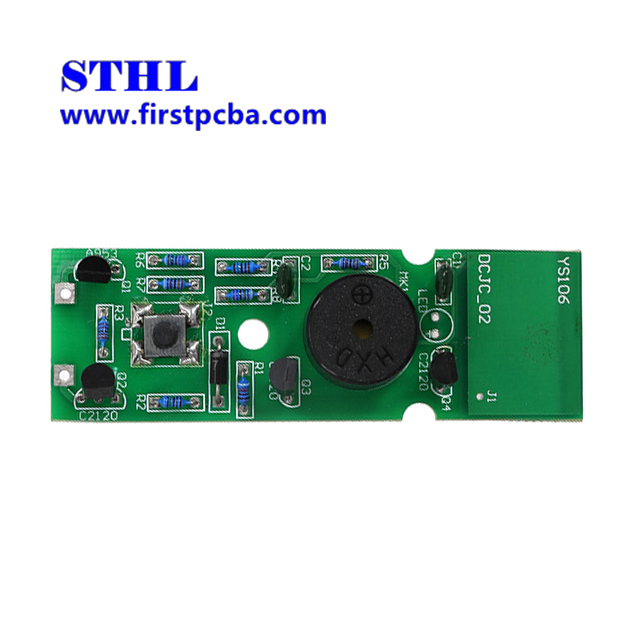AI CITY Will Pave the Way For the Cities of Tomorrow
Cities often represent growth in mankind’s collective wisdom. The goal of every great city is to be built with the highest quality resources available and make use of the newest and most innovative technologies.
In the ancient city of Rome in the 1st century AD, the use of early hydro technologies allowed the population to flourish. Hydro power was one of the most widely used examples, generating mechanical energy through massive waterwheels. Furthermore, a highly developed water supply and drainage system provided ample clean water every day. They would collect the water and store it in large reservoirs by redirecting subsurface water from nearby rivers and lakes into artificial channels called ‘aqueducts’. This system was so effective that their water supply actually exceeded population demand. It was able to support households, gardening, water shows, mill grinding and the great Roman fountains we still see in use today. The Romans could even use the waterways as escape routes or in complex military strategies.
These innovations were magnificent. They laid the foundation for the incredibly rich, vibrant cities we live in today. Over 2,000 years later, our idea of innovation has shifted. Instead of aqueducts, we are working with the invisible networks of 5G, big data, Internet of Things (IoT) and artificial intelligence (AI).
Let’s set the stage. Morning sunbeams stretch slowly over a city silhouette, as the light reaches out into every corner of this X-Tech city. The residential roads are bordered by lush greenery as dewdrops slide from the highest tree leaves down onto solar panel laden rooftops, then to their final resting place in the grass. There is a heartbeat - not just within the surrounding nature - but witihin the structures themselves. As the dewdrops fall, the solar panels adjust themselves, ever so slightly, so water can slide into the gutters and reach the plants below. As sunlight hits the houses, bedroom windows adjust their opacity to allow the natural light to wake sleepy residents. Once light has filled the room, an AI virtual housekeeper selects your breakfast, matches your outfit with the weather, and presents a full schedule of your day. After breakfast, you step into your intelligent, fully-automated vehicle, and begin your intercity commute cities browsing global market news - recommended by an algorithm, of course!
This is not some SciFi pipedream, but a glance at the plans for an upcoming top AI Cities. As early as 1992, Singapore proposed an plan known as the "Intelligent Island" in an attempt to create a country powered by artificial intelligence and machine learning. Subsequently, the Korean government proposed the "U-Korea" strategy in 2004, hoping to use the Internet and wireless sensors to transform Korea into a smart society.
In 2008, IBM first proposed the "Smarter Planet” initiative, and then formally rolled out the concept of "Smarter Cities" in 2010. Since then, there has been momentum toward creating "smart cities" around the world.
In 2013, the Ministry of Industry and Information Technology of China led the establishment of the China Smart City Industry Alliance and planned to invest RMB 500 billion in the next few years to build smart cities. In 2015, the US government proposed a new smart city initiative to actively deploy smart grids, smart transportation and broadband.
Cities are effectively giant machines that must run 24/7. People need this machine in excellent working order every day to protect and transport people and resources for different purposes – big and small. These tasks range from keeping public order to repairing broken manhole covers. Smart cities seek to connect all these details of city life to the Internet and Cloud, applying IoT, AI, 5G, big data and other new ICT technologies to optimize operational efficiency of these giant machines.
The AI CITY is the next generation smart cities, and its scope is more sophisticated than merely connecting devices. The key innovation lies in the role of artificial intelligence in its infrastructure, which will allow devices to operate on their own. This will ultimately allow the city to better manage its people and resources.
Europe and the United States had an early start in the development of smart cities. In London, investments in smart city infrastructure such as the Internet of Things, big data, cloud computing, artificial intelligence and blockchain have reached GBP 1.3 trillion. These investments were largely used in building smart grids, smart streets, smart transportation and other municipal projects. As an example, let’s look at London’s West End. Using GIS, CAD and 3D virtual technology, the area has been transformed into a hub of data generating buildings. Around 45,000 buildings within an area of nearly 20 sq.km are now utilizing internet-connected, data-generating devices in the West End. It’s a prime example of an urban geo-information system offering optimized looks into landscape design, traffic control, sustainability, emergency management and more.
New York has also benefited from a smart urban technology. More specifically, the city implemented a smart grid project where Con Edison, an electricity utilities company, automated and upgraded more than one-third of New York’s power grid to prevent any single accident from causing damage to the entire grid.
Moving geographies, the number of smart city developments in the East have outpaced the West. Both Japan and South Korea have used smart city technology to focus on resource allocation in their most densely populated cities. Seoul has established an integrated transportation system that uses smart cameras in subways to obtain information on passenger volume, and adjust the speed and frequency of trains in real time accordingly. It also installed sensors to monitor important train components to proactively prevent malfunctions. In Yokohama, the Smart Environment Project has deployed a series of advanced energy management systems in households and commercial buildings to "visualize" energy. Solar power solutions and home energy management systems were installed which allowed crucial energy data to be displayed. Now municipal officials could track power generation, power consumption and power sales.
Currently, China enjoys the fastest development of smart cities and has the highest abundancy of smart communities and AI technology in the world. More than 40% of global smart city projects are currently under construction in China. In Chongqing, a metropolis in southwest China, Terminus Group - an innovator in artificial intelligence, internet of things, and robotics - is building a smart city with a total gross floor area of 2,500,000 sqm. The company plans to use its suite of AI and IoT technologies to upgrade the sustainability, operations and visitor experience of the city. It will also empower traditional industries with new ICT technologies to create the world's first model of an AI CITY which incorporates all types of businesses and diversified industrial chains.
The Catalyst for AI CITYImplementation: Competition among the World's Top Tech Companies
Although the government plays an important role in planning and building an AI CITY, the true drivers of smart city innovation are the world's top technology companies.
IBM, the first major player in the smart city space, applied different functional modules such as smart healthcare, smart transportation, smart education, smart energy, and smart telecommunication to hundreds of cities across the globe. It collected a large quantity of data and integrated it into the city's main operational management centers.
However, given that cloud computing and AI technologies were not salient during this period, IBM was not able to effectively roll out its “Smarter Cities” initiative. Its solutions were frequently turned down by municipal governments due to the immense investment costs overshadowing the benefits gained from the new technology.
As a world-renowned network provider, Cisco has developed another angle on smart cities. Instead of undertaking mammoth projects like integrating smart technology across entire cities, Cisco’s strategy focuses on establishing smaller smart communities and driving change from the bottom up. In Copenhagen, it helped the city become carbon neutral; in Hamburg, it played a role in establishing a fully digital network and IT strategy that enabled an integrated management of land and marine transportation.
Meanwhile, Siemens, a global leading industrial manufacturer, has been working on smart grid solutions to help cities optimize their energy storage. Centralizing their strategy around smart grids allows for meaningful connections between smart buildings, electric transportation, smart meters, power generation, etc. It allows the company to integrate and upgrade an existing system as opposed to building out an entirely new system from scratch. It is an effective way to test out the new IoT technologies without generating tremendous risk to the city’s existing infrastructure.
The AI CITY ecosystem in China has benefitted tremendously from these existing projects. Chinese companies have been able to learn from the development of these global projects and combine the existing frameworks with emerging technologies like 5G, big data, cloud computing, AI and intelligent hardware R&D. This has provided an edge when constructing new smart city projects domestically.
Terminus Group, a leading global smart service provider, is one company taking full advantage of this opportunity. Terminus Group aims to shape the next generation of technology with AI and IoT, and has emerged as an industry integrator, achieving full coverage from a suite of products from service robots and sensors to edge smart products, all the way to cloud platforms. Terminus Group’ AI CITY solution is scene-oriented. It utilises the company's many years of experience in the AIoT industry to bring solutions for social management, energy efficiency improvement, smart parks, cultural innovation and smart finance to communities and cities. It has implemented and maintained more than 8,000 smart scenes in 84 cities.
Terminus Group’ AI CITY smart solutions are used to enhance traditional offline spaces. Shopping malls, for example, have several areas where operational efficiency could be better optimized. Terminus Group’ smart solutions allow malls to find these optimal points by collecting multi-dimensional data related to people, goods, stores, and orders. Their solutions provide digital operational tools for each functional unit of the mall. This allows customers to have a more reliable and enjoyable shopping experience. As an added benefit, by tapping into rich data, the shopping mall is able to achieve higher sales conversion, higher per capita sales and higher inventory turnover.
Terminus Group’ intelligent fire protection solution tells another positive story in favour of developing smart technologies. Terminus Group is able to leverage artificial intelligence to create a system of automated fire prevention and control. It lowers risk to firefighters and law enforcement while increasing preventative measures for structure fires. Terminus Group uses GPS, GIS, BIM and other geographic location information systems to map firehouses and fire law enforcement units in real-time. As a result, responders can reach the scene more efficiently by triangulating the closest available units. This solution also provides tooling for conducting data queries, pulling statistics, general analysis, decision-making, and intelligent identification of fire origins. The information is stored in data warehouses which can be mined and analyzed as needed.
Unlike the bottom-up strategies that other technology companies have used to promote smart city construction, Terminus Group has taken a top-down approach for scaling their solutions. Terminus Group aims to build science and technology industry parks by integrating its industrial resources. It also aims to enrich and improve its solutions by exploring diverse use cases. By continuing to grow within local smart city operations, Terminus Group has seized an opportunity to shape core frameworks for future smart cities. It stands to profit from the growing demand for smart technologies, while also contributing to a more sustainable world.
What Else Can We Do to Find the Way to AI CITY
The map to a sustainable AI CITY is unfolding at an unprecedented rate. Two players will influence the continued development of smart cities: governments and industry-leading companies.
For governments, it is essential to support in the planning and development of an AI CITY. Most importantly, they must consider the opinions and well-being of their citizens. London is an excellent example. The Greater London Authority developed an online community called "Talk London" to provide a safe space for online discussion, voting, Q&A, surveys, and more to cover impactful topics ranging from private rental markets to the safety of cyclists around large trucks. This process allows London citizens to participate in government decision-making. As a result, the policies formulated by the government often more accurately reflect the real needs of its people. In comparison, Google's Toronto Smart City Plan was recently under fire as it went against the needs of the local residents.
In closing, it would seem industry-leading companies will be tasked with shouldering more social responsibility. There is a clear commitment from these entities to contribute to technological progress, cultivate highly skilled professionals, and grow their brand. However, there is a crucial role to be played in popularizing and building out legitimate use cases for these new cities. These companies must extend the range of their considerations beyond just technology to those that will be using it. Innovation comes with the innate responsibility to better the lives of people around the globe. If the smart city and AI CITY models can embrace this notion, the future will be brighter than ever before.
Terminus Groupis a professional iot services company. We provide iot smart services, iot solution and services, artificial intelligence solutions and etc. Want to know more? Please contact us.
Send product request
Other supplier products
| Smart Community Platform | Mainly used by the Command Platform of smart communities to enable scenario sensing, city management, security alerts and IoT device management cap... | |
| Edge Gateway | Flexible combinations of multiple editions: Lite, Flex and Fusion Industry-leading 240-FPS structured processing Supporting the latest video enco... | |
| Smart Community Platform | Smart Community Platform Mainly used by the Command Platform of smart communities to enable scenario sensing, city management, security alerts and... | |
| AIoT Platform | Smart Firefighting Platform Created to meet the requirements of firefighting departments at all levels, including automated fire prevention and co... | |
| Edge Computing Module | Swappable flexible computing units Al-enabled computing capacity deployment for higher performance at lower costs Industry-leading performanc... |
Same products
| Toy flammability tester | Seller: Qinsun Instruments Co., Ltd | The Toy burning tester is designed to determine the safety property (flammability) of equipment, ... | |
| PCB circuit board manufacturer for computer component PCB assembly service | Seller: Shenzhen STHL Electronics Co.,Ltd. | SERVICES:electronic material procurement, PCB production, PCBA assembly, cable assembly, finished... | |
| Full Automatic PCB Assembly for Industrial Automation Custom PCB Manufacture PCBA Service | Seller: Shenzhen STHL Electronics Co.,Ltd. | SERVICES:electronic material procurement, PCB production, PCBA assembly, cable assembly, finished... | |
| PCBA Assembly Factory Android Motherboard Products PCBA Printed Circuit Board PCB SMT Service | Seller: Shenzhen STHL Electronics Co.,Ltd. | SERVICES:electronic material procurement, PCB production, PCBA assembly, cable assembly, finished... | |
| PCBA customize air conditioner inverter universal single side PCB control board PCB assembly | Seller: Shenzhen STHL Electronics Co.,Ltd. | SERVICES:electronic material procurement, PCB production, PCBA assembly, cable assembly, finished... |











